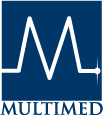Adherence to Canadian Diabetes Association Clinical Practice Guidelines for Patients Attending an Outpatient Diabetes Education Centre
DOI:
https://doi.org/10.4212/cjhp.v61i3.52Keywords:
type 2 diabetes mellitus, guideline adherence, quality assessment, diabète de type 2, observance des lignes directrices, évaluation de la qualitéAbstract
ABSTRACT
Background: Clinical practice guidelines can be a useful tool in the effort to improve patient outcomes.
Objective: To determine the percentage of patients attending the Diabetes Education Centre at the Lions Gate Hospital for whom monitoring frequencies, laboratory targets, and medication therapy (as recommended in the 2003 clinical practice guidelines of the Canadian Diabetes Association) were achieved.
Methods: Health records were reviewed for all patients with type 2 diabetes mellitus who were 19 to 69 years of age at the time of their first visit to the Diabetes Education Centre and whose first visit took place in 2004.
Results: Initial monitoring frequencies for hemoglobin A1C, lipid profile, urinary albumin to creatinine ratio, and eye examination were achieved for a high proportion of the 167 patients who met the study criteria (63% to 93%). Recommended laboratory targets for hemoglobin A1C were achieved for a high proportion of patients (93%), but the rate was lower (21% to 44%) for other targets (fasting plasma glucose, blood pressure, low-density-lipoprotein cholesterol, and ratio of total cholesterol to high-density-lipoprotein cholesterol). Less than 60% (25% to 56%) of eligible patients received recommended medications (antihyperglycemic agents, antihypertensive agents, statins, and acetylsalicylic acid).
Conclusions: For most patients, recommendations for initial monitoring were met, but more work is needed to ensure that laboratory targets are achieved, that appropriate medication therapy is initiated, and that the management of cardiovascular risk factors is emphasized.
RÉSUMÉ
Historique : Les guides de pratique clinique peuvent constituer un outil utile pour essayer d'obtenir de meilleurs résultats thérapeutiques.
Objectif : Déterminer le pourcentage de patients utilisant les services du Centre d’éducation sur le diabète de l’hôpital Lions Gate, pour lesquels les fréquences de contrôle, les objectifs de valeurs de laboratoire et le traitement médicamenteux étaient conformes aux Lignes directrices de pratique clinique de 2003 de l’Association canadienne du diabète.
Méthodes : Les dossiers médicaux de tous les patients atteints de diabète de type 2 et qui étaient âgés de 19 à 69 ans au moment de leur première visite en 2004 au Centre d’éducation sur le diabète ont été examinés.
Résultats : Les fréquences de contrôle initiales pour l’HbA1C, le bilan lipidique, le rapport albuminurie/créatininurie et l’examen ophtalmologique (de 63 % à 93 %) ont été respectées chez un fort pourcentage des 167 patients qui ont satisfait les critères d’admissibilité. Le pourcentage de ces patients chez qui ont été atteintes les valeurs de laboratoire recommandées était élevé pour ce qui est de l’HbA1C (93 %), mais bas (de 21 % à 44 %) pour ce qui est des autres valeurs cibles (glycémie à jeun, tension artérielle, cholestérol des lipoprotéines de basse densité, et rapport cholestérol total:cholestérol des lipoprotéines de haute densité). Moins de 60 % (de 25 % à 56 %) des patients admissibles ont reçu les médicaments recommandés (hypoglycémiants, antihypertenseurs, statines et acide acétylsalicylique).
Conclusions : Les recommandations relativement au contrôle initial ont été satisfaites chez la plupart des patients, mais plus d’efforts devront être consentis pour atteindre les valeurs de laboratoire cibles, amorcer un traitement médicamenteux approprié et accorder plus d’importance à la prise en charge des facteurs de risque cardiovasculaire.
Downloads
Downloads
Published
Issue
Section
License
Copyright © Canadian Society of Healthcare-Systems Pharmacy.
After publication of a manuscript in the CJHP, the authors of the manuscript must obtain written permission from the CSHP (publications@cshp.ca) before reproducing any text, figures, tables, or illustrations from the work in future works of their own. If a submitted manuscript is declined for publication in the CJHP, all said rights shall revert to the authors. Please note that any forms (e.g., preprinted orders and patient intake forms) used by a specific hospital or other health care facility and included as illustrative material with a manuscript are exempt from this copyright transfer. The CJHP will require a letter from the hospital or health care facility granting permission to publish the document(s).









